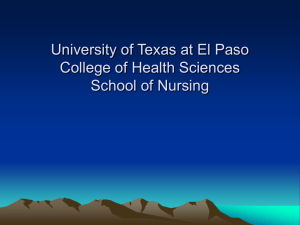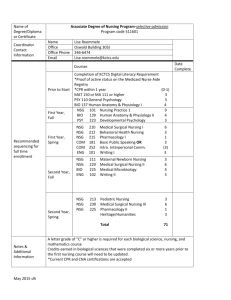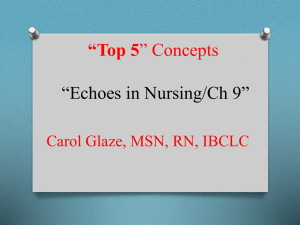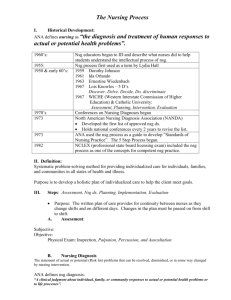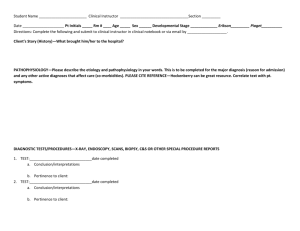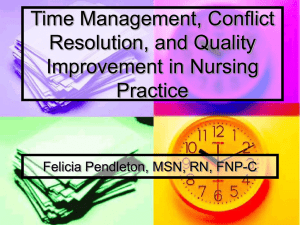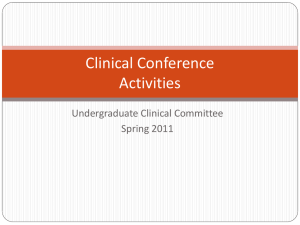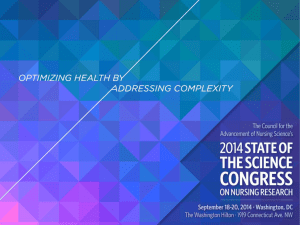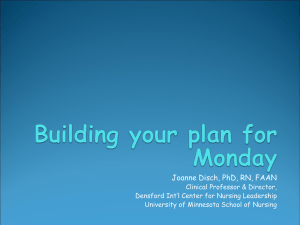University of Texas at El Paso College of Health Sciences School of
advertisement
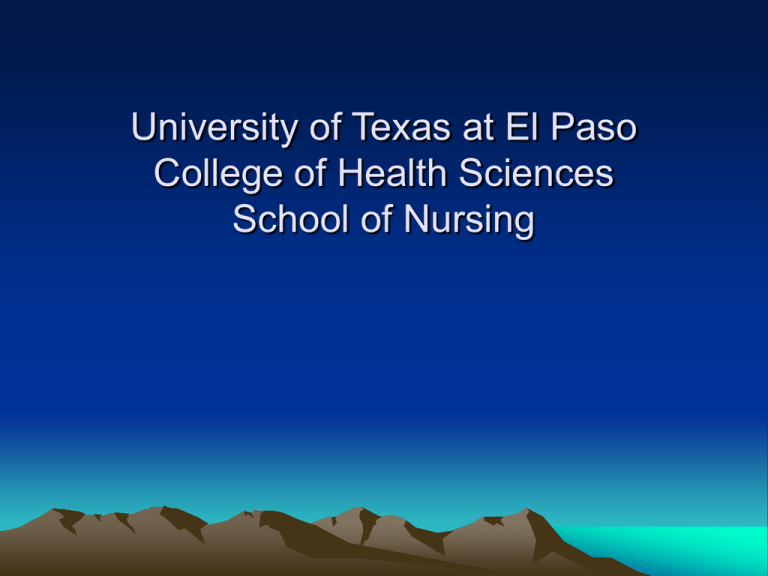
University of Texas at El Paso College of Health Sciences School of Nursing Objectives: • 1. ID purposes & essential elements of nsg theories • 2. Differentiate terms: concept, conceptual framework, conceptual model, & theory • 3. Compare selected theories of nsg. in terms of Pt., environment, health & nursing. • 4. Describe relationship of Nsg. Theory to nsg. Process & nsg. Research Purposes of Nsg. Theories & Conceptual frameworks • • • • Practice Education Research TRIANGULATION between the three is essential What is a metaparadigm? • Meta = change • Paradigm= world wide view (Webster’s, 1983) What is a concept? • A mental image that has emotional, cognitive, spiritual and cultural dimensions – A conceptual framework is a group of related concepts – A conceptual model is a graphic illustration of the relationships between concepts What is the major distinction between a theory & conceptual framework? • Level of abstraction • Conceptual framework is more abstract than the theory • Conceptual model is a diagram with its major purpose being to give clear & explicit direction to nsg. Practice, education & research CONCEPTUAL TERMS • 1. Conceptual framework • 2. Conceptual model • 3. Theory = system of ideas that is proposed to explain a given phenomenon Grand Nursing Theories – Middle Range Nursing Theories Metaparadigm of Nursing • Metaparadigm of Nursing is composed of 4 concepts – Person – Environment – Health – Nursing SELECTED GRAND NSG. THEORIES (11) • • • • • • Nightingale (1860) Peplau (1952) Henderson (1966) Martha Rogers (1970) Orem (1971) King (1971) • • • • • Neuman (1972) Sister Roy (1970) Leininger (1985) Watson (1979) Parse (1981) Nightingale’s Environmental Theory • First Nurse Theorist • Nursing = “act of utilizing environment of patient to assist him in his recovery” (Kozier, 2000) • Primary Concepts = Environmental factors (5) • • • • • Pure air Pure Water Efficient drainage Cleanliness Direct sunlight Peplau’s Interpersonal Relations Model • Psychiatric nurse • Concept = therapeutic relationship between nurse & client • Nurse-Client Relationship Phases (4) – – – – Orientation Identification Exploitation Resolution Henderson’s definition of nursing • Formulated unique definition of nursing in relation to both well & will individuals • Major step in differentiating nursing from medicine • Fundamental needs of sick or well individuals (14); – – – – 1. Biophysical needs 2. Psychological needs 3. Spiritual needs 4. Social needs Roger’s Science of Unitary Human Beings • Draws from many scientific disciplines • Major concepts: – Unitary man with 5 characteristics Human energy fields= non contact therapeutic touch • Differentiates whole from holistic Orem’s General Theory of Nursing • Major concepts (5) – – – – – Self-care Self-care agency Self-care requisites Therapeutic self-care demand Nursing systems • Assumptions (3) – Universal requisites – Developmental requisites – Health deviation requisites King’s Goal Attainment theory • Based on systems theory & behavioral sciences • Major concepts – – – – Personal systems Interpersonal systems Social systems Transactions • Assumptions (3) – All related to transactions Neuman’s Systems Model • Community health nurse& clinical psychologist • Major concept = STRESS • Reconstitution = state of adaptation to stressors – Lines of resistance – Normal line of defense – Flexible line of defense • Stress categories: intrapersonal, interpersonal, extrapersonal • Assumptions (3) Roy’s Adaptation Model • Major concept = adaptation = process & outcome whereby thinking & feeling person uses conscious awareness & choice to create human & environmental integration • Modes (4) – – – – Physiologic mode Self-concept mode Role function mode Interdependence mode Leininger’s Cultural Care Diversity & Universality Theory • Anthropologist • Care- essence of nsg. & dominant, distinctive & unifying feature of nsg. • Major concepts = culture, culture care, culture care diversity, culture care universality, generic care, professional care, sunrise model • Intervention modes (3): Preservation, accommodation, restructuring Watson’s Human Caring Theory • Major Concept = caring • Assumptions (11) • Carative Factors (10) – Interpersonal relationship – Use of scientific process – Addresses clinician’s self Parse’s Human Becoming Theory • “Human Becoming” • Concepts (3) – Meaning; Nurse & true presence; Pt. Is authority figure – Rhythmicity – Co-transcendence • Assumptions (3) • Human becoming & meaning – Human becoming & rhythmic patterns – Human becoming co-transcending Relationship of theories to Nursing Process • • • • • 1. 2. 3. 4. 5. Assessing Diagnosing Planning Implementing Evaluating SUMMARY • Terminology common to theory discussion • Nursing Grand Theories (11) • Relationship between theory & nursing practice
